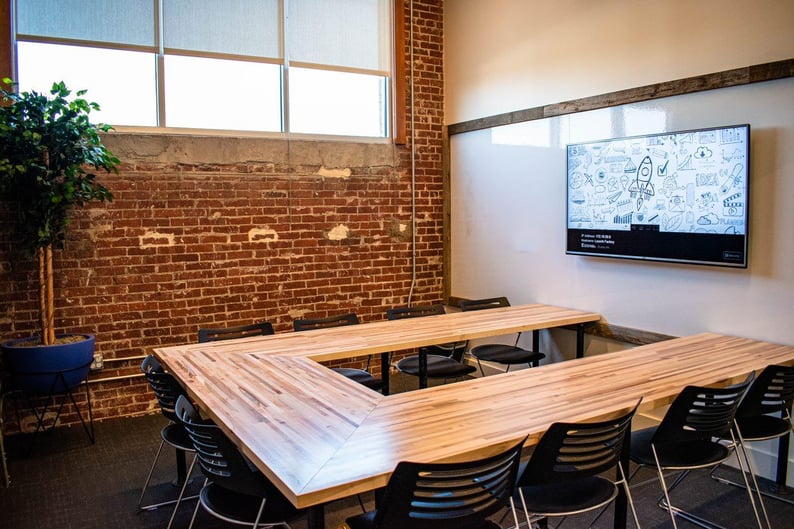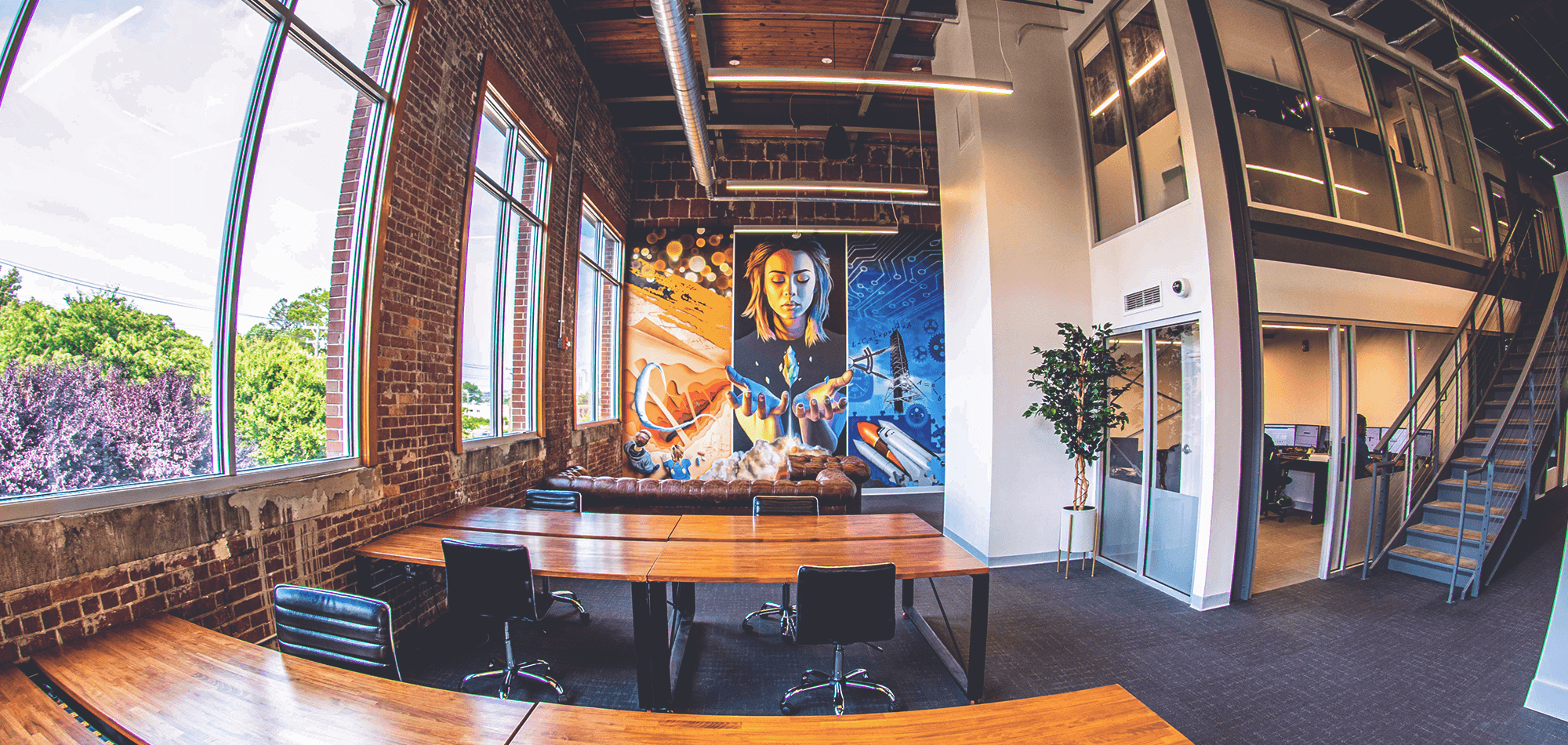There’s a direct correlation with the needs of coworking spaces and the trends among rapidly changing technology—as well as the shifts in the workforce and today’s customer expectations
In fact, taking a look at these trends would better prepare workspaces for the digital transformation and help them stay ahead of the competition.
Imagine your beautiful coworking space being transformed by IoT devices and your workflow simplified through cloud-based software—where everything actually works the way it’s meant to!
That’s the kind of future that a prepared environment with smarter WiFi can offer. If “a home needs a stable foundation,” then coworking needs a reliable wireless network.
Every good digital transformation strategy starts with growth projections and business goals and ends with a simple solution for an intelligent network.
That’s why we’ve broken down seven important trends and how they are driving the need for coworking spaces to have smarter wireless networks and what solutions are available to business owners.
1. An Increase in Members and Devices
With 70 percent of people globally working remotely at least once a week, there’s no surprise that the coworking industry is booming and projected to keep growing.
- A typical coworking space has on average 90 members (DeskMag)
- There are approximately 8 networked devices per person (Cisco)
So, if we were to combine these two seemingly unconnected statistics, we are talking about 720 devices at the average coworking space location—that’s a lot of devices that your wireless network needs to be able to support!

2. An Increase in Coworking Applications
It makes sense that like most industries, coworking spaces are looking towards cloud-based applications and the internet of things to increase productivity, decrease costs and ultimately create a better guest experience.Here’s a list of some of the many coworking applications being used today:
- Keyless building entry (i.e. Vizpin)
- Workspace management software (i.e. Yardi Kube)
- Coworking software (i.e. Office RND)
- Design software (i.e. Canva)
- Wireless HDMI transmitters (i.e. IOGEAR Digital Gear)
- Video Surveillance (i.e. Rhombus Systems)
- Payroll Software (i.e. Gusto)
- Smart thermostats (i.e. Google Nest)
- Video Conferencing Software (i.e. Microsoft Teams)
- Service Request Apps (i.e. Zendesk)
- Interactive Wayfinding (i.e. 22MILES)
However, as our dependence on these applications becomes more mission-critical, the more important it becomes to have fast and reliable WiFi connectivity.
3. An Increase of Remote Worker Guidelines
Currently, 40 percent of people who use coworking are employees (i.e. they were working for an employer) according to Entrepreneur.com. That’s already almost half of users—debunking a common misconception that typical users are only freelancers and startups.
Now—IBM, Yahoo, Aetna, and Best Buy recently announced that they would require those working from home to return to a main office or worksite. This is due to two main reasons: employers did not have the proper resources to do so productively and a decline of work collaboration.
Therefore, more current at-home remote employees are beginning to turn to these new spaces in order to benefit from being in a professional environment that includes amenities like fast WiFi needed for the online, collaborative demands of their company.
However, if the WiFi your providing is worse than your customers are experiencing at their house or at the competition, why would they come to your workspace?
4. An Increase of Security Concerns
Security is the most crucial aspect of a coworking space because there are remote workers of different companies, freelancers, and multiple small businesses all on the same network. The more people you have on your network, the greater the devastation it can have if your network isn’t protected from malicious attacks.
Since coworking is primarily BYOD-based where everyone is bringing their own personal devices with them to the office, that means all the security concerns that comes with BYOD enters this type of environment too. As an example, if a workspace user connects his personal device to access the network, can he or she see who else is on the network? Can they access areas of the network they shouldn’t be able to?
"Every 39 seconds, malicious hackers are attacking computers and networks "- University of Maryland
There are several key network security measures that can be taken to ensure that everyone’s data is safe and that it doesn’t impact the user experience. At a high-level this can include:
In a lot of cases, pre-shared keys (passwords) are used to access the network and then rules configured within the firewall are created to lock things down. However, if you could integrate with the coworking software being used, then it would be possible to use things like network access control to further enhance your network security.
As technology is getting smarter, hackers are getting more clever, which is driving the need for a network that is engineered with proper security.
5. An Increase of Scaling Rather Than Growth
Let’s face it—we can all learn a few things from the recent mass layoffs at WeWork. They confused growth for scaling. According to the Harvard Business Review, “Growth means adding revenue at the same pace you are adding resources; scaling means adding revenue at a much greater rate than cost.”
Like we said earlier, coworking is a booming industry that has a very bright future:
- By 2022, there will be approximately 5.1 million coworking users (Ergonomic Trends)
- By 2022 there will be 13.6 networked devices per person (Cisco)
So, when considering these projections, it means that your business’s WiFi plan needs the flexibility and capability to scale for this expected growth.
Does your workspace have a wireless network that’s ready for scale?
If not, do you know what solution options are available to you?
A network subscription, allows for easy scalability by providing flexible options to customize the WiFi network you want, how you want it. This allows for quick, mid-contract as well as predictable refreshes and more consistent service across multiple locations.
Seamless scalability along with worry-free management (if you so choose) is a beautiful thing when it comes to the future success of your workspace.
6. An Increase In Guest Expectation
"Consumer expectations are growing at an average of 25 percent each year. - Brand Keys,."
We know that guests want access to amenities such as standing desks, coffee bars, podcast rooms, and automated door locks. However, coworking businesses are a blend of two types of environments: hospitality and business.
Your guests complete a majority of their work digitally, so they depend on your WiFi to do their jobs and make their incomes. So, your environment not only has to provide amenities but also deliver fast, reliable, and secure WiFi.
When guest expectations are not met, many take to social media to voice their complaints and/or join a competitor’s space.
"Your WiFi is no longer a nice-to-have amenity, must-work utility."
Which poses the question—why not pay for WiFi the same way you pay for other utilities? It's the reason so many businesses are turning to managed WiFi solutions that offer everything they need in a subscription that they pay each month.
By managing the experience, along with having the right technology in place, there’s no reason why you can’t meet the ever-growing expectations of your guests.
There’s also a lot of valuable data that can be pulled from your WiFi network if it is built correctly with the right hardware and software in place to create meaningful insights.
Pairing the Guest Experience with Business Analytics
Also—you probably didn’t know this but - your wireless network is also a goldmine of business intelligence, which comes handy when making those business operation decisions with the guest experience in mind.
If the right components are used, you can pull valuable data from your network that has the potential to answer several business-focused questions while also creating a better guest experience, such as:
-
Which meeting room is not being occupied?
(Business intelligence can help reduce energy cost for the business by turning off lights and adjusting temperature, while also optimizing space for guests by knowing which meeting rooms they can use.) -
How should I schedule my community coordinator(s) based on when workspace users arrive?
(Business intelligence saves payroll cost for the business by analyzing when guests arrive and allows productivity and efficiency for your staff.) -
How can I differentiate/customize the customer experience?
(Business intelligence gives a competitive advantage for the business by detecting the preferred presets of guests such as standing desk height.)
7. Finally - An Increase in WiFi Complexity
This all brings us to our last point—WiFi is a complex system that requires industry-certified engineers who understand how to design and manage it properly. As the number of connected devices in coworking increase, and the dependence on cloud-based software also increases, the challenges with WiFi become more complex as a result.
While we cannot break the laws of physics, engineering uses mathematics to “bend” the laws of physics. Hence, we add more mathematical complexity in order to squeeze more efficient performance.
The bottom line is that coworking spaces either need to have an in-house IT staff with WiFi expertise (which they rarely have) or partner with a solutions provider who specializes in the implementation and management of enterprise-grade WiFi.
A good solutions provider will provide WiFi designs, installation and configuration on the front-end as well as ongoing managed network services for your network on the back-end.
Navigating the digital transformation is a top priority for every business today and it's one of the largest drivers for implementing WiFi.
This blog post was originally posted on April 30th, 2019 and has been completely revamped for accuracy and helpfulness.





